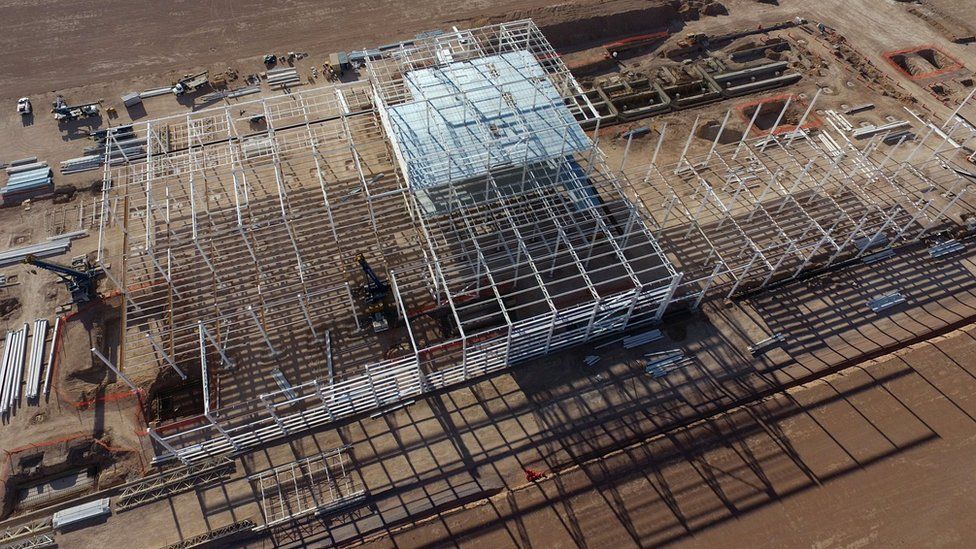Ford to move production of US Focus to China
- Published

Ford is to move production of its new Ford Focus car to China in 2019, despite having faced pressure to keep manufacturing jobs in America.
The carmaker said the decision would not lead to layoffs in the US.
But the move marks another change to its plans for producing the new Focus.
The firm in January scrapped plans to move US production to a new $1.6bn (£1.3bn) plant in Mexico after criticism from Donald Trump.
Currently, Ford makes its Focus cars in Michigan, Germany and in China.
But it has seen sales of the model fall in the US, while demand for larger vehicles remains.
It was planning to move US production of the Focus to a new factory near San Luis Potosi in Mexico.
That decision drew fierce criticism from the US president, who has routinely blasted car makers and other companies for importing goods from other countries, including China and Mexico.
The Trump factor - John Mervin, BBC Business, New York
A few months ago Ford's decision to abandon plans for a new plant in Mexico was seen as a triumph for President Trump and his approach to US companies and global trade.
His personal and public intervention seemed to have brought production of Ford's new Focus model to the United States - a clear win for Mr Trump's belief that goods bought by Americans should be made in the US.
Having the Focus made in China instead was not part of the plan. So Ford clearly runs a risk of annoying Mr Trump further. But with his legislative agenda stalled, his administration engulfed in controversies and his approval ratings sinking, it's not clear what he can do to stop it.
It may be the president's hands-on style of pressuring companies into bringing production to the US was only effective for a few months.
In January, Ford said it would abandon the new factory and move production to an existing plant in Hermosillo, Mexico instead. At the time, the company said it would use the savings to invest at a different plant in Michigan working on electric cars.
But Tuesday's announcement means Ford will make the new Focus in China, instead of Hermosillo - producing $500m in savings.
The move to China will not affect employment levels in Hermosillo, which produces other models, said spokeswoman Kelli Felker. It also does not affect the plans for the additional investment in Michigan, she said.
The Michigan plant currently producing the Focus will switch to making trucks in 2018, with the same number of hourly workers, the firm said.
Ford also said it would invest $900m to retool an SUV plant in Kentucky.
Ford updated the White House about its new plans on Tuesday, Ms Felker said. She said the firm had been considering the move for some time.
White House spokesman Sean Spicer on Tuesday said Ford's plans - which could have a large impact on US parts suppliers - underscored the need for tax reform, to help make domestic manufacturing more competitive.
New leadership
The investments are some of the first announced under new leadership at Ford.
The company named Jim Hackett as the new chief executive in May after pressure from shareholders to improve the firm's performance.
Joe Hinrichs, an executive vice president at Ford, said the savings from the move to China would allow the firm to invest in parts of the business that are growing, such as SUVs, electric cars and other areas.
"Finding a more cost-effective way to deliver the next Focus program in North America is a better plan, allowing us to redeploy the money we save into areas of growth for the company," he said.
Ford sold about 67,150 Focus cars in the US in the first five months of 2017, down almost 20% from 2016.